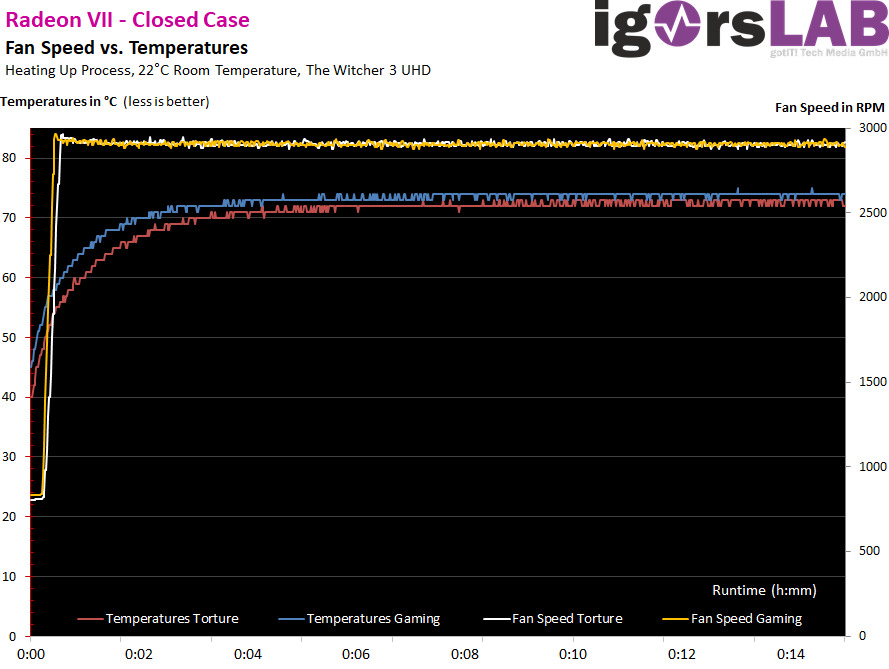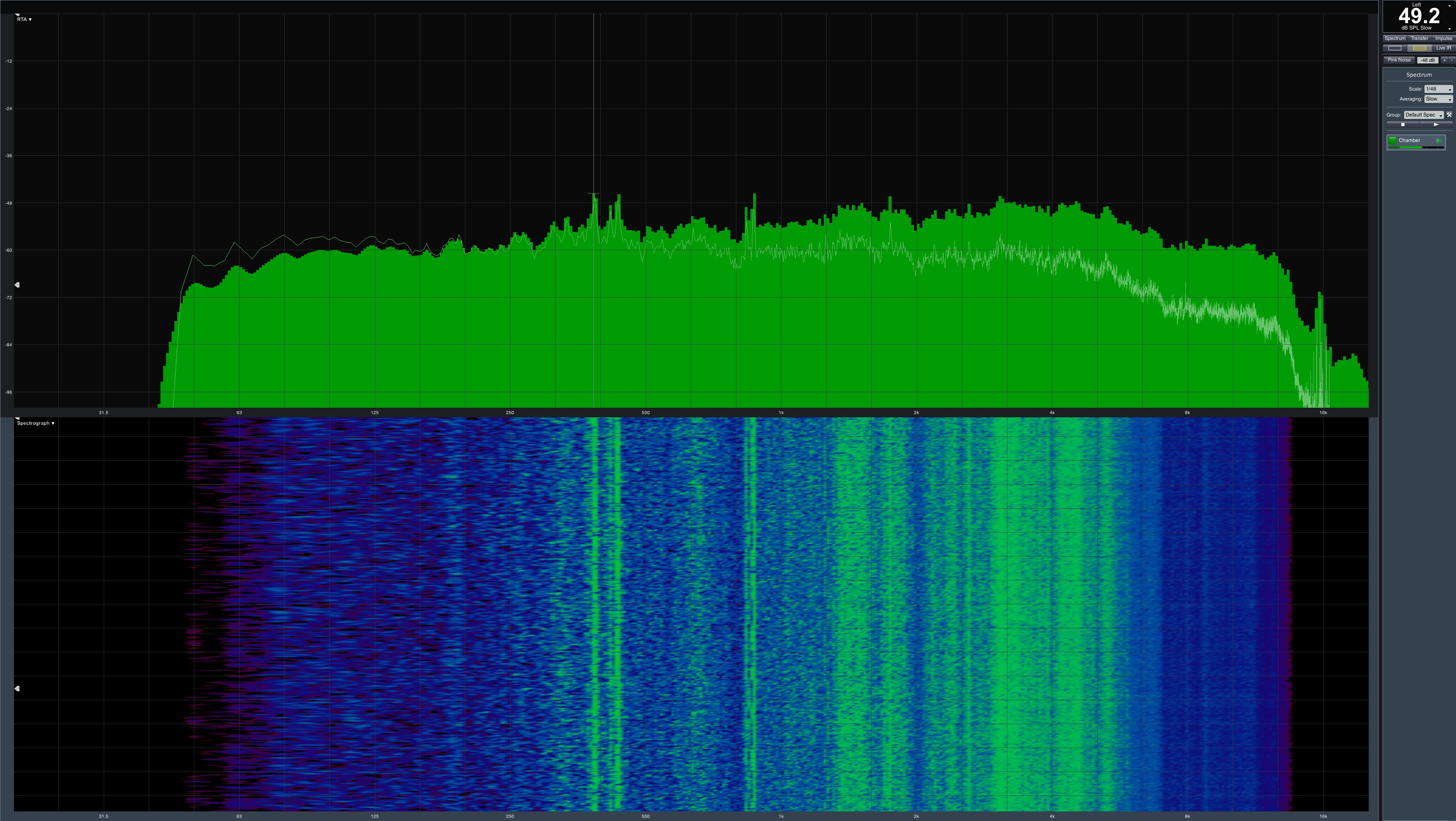There is no fan stop, but the fans in the idle with permanent 800 to 820 rpm rotating fans do not disturb either. What struck me later, however, was the possible serial dispersion of the individual fans, which run at identical PWM signal with slightly different speeds, as a separate laser measurement showed. At higher speeds, a slightly oscillating noise results, as these differences fall into the audible frequency range and one can also perceive "floating" sounds well.
But the actual construction site is somewhere else, because if we look at the fan curves, then we and our ears are truly bad. Between 54 and 55°C, the mail goes off during the warm-up! From zero to almost 3000 in under 3 seconds! That doesn't even make a rocket launch, but that's the map. I also don't want to hide the fact that the first time I got a fright and thought the card was broken.

In a lengthy conversation with AMD, we sold this behavior as an intended feature and also referred to Wattman, where you can customize the fans yourself with a now much easier to use control. Of course very much at the expense of performance, but the enthusiast would put performance before volume anyway. Well, if you look at it that way…. You can't just listen.
This is precisely why I have prepared not only the still image of the frequency spectrum and the values of the sound pressure, but a real video with an analysis of the determined spectrum. If you've always wanted to know which other device the card could easily compete with, here's the resolution:
Let's look at the measurements again in direct comparison to Nvidia's Founders Edition as a tabular listing:
| AMD Radeon 7 | Nvidia GeForce RTX 2080 FE |
|
|---|---|---|
| Fan speeds Open Benchtable Maximum | 2927 rpm (Gaming, Peak) | 1907 rpm (Gaming, Peak) |
| Fan speeds Open Benchtable Average | 2911 rpm (warmed up) | 1887 rpm (warmed up) |
| Fan Speeds Closed Case Maximum | 2949 rpm (Gaming, Peak) | 1959 rpm (Gaming, Peak) |
| Fan Speeds Closed Case Average | 2927 rpm (warmed up) | 1942 (warmed up) |
| Noise Emission (Air) Average | 49.2 dB(A), Closed Case (Peak) | 39.6 dB(A), Closed Case |
| Noise Emission (Air) Idle | 32.1 | 31.3 dB(A) |
| Sound characteristic / hearing impression | rushing, engine noise | rather noisy, hardly lower-frequency shares |
| Coil-feathers/electric noises | constantly audible | low, only for very high FPS numbers and for load changes |
Sound Spectrum
The measured 49.2 dB(A) is based on the measured 2947 rpm in the closed housing. We have applied the same gaming load to the open set-up in the measuring room, but the fans are limited to approx. fixed at 2950 rpm in order to be able to adjust this value exactly. The result is a whopping 10(!) dBA above that of nvidia's Founders Edition and is completely unacceptable.
The card is loud, way too loud. You can turn and turn it as you like, but if you operated Nvidia's FE at the same fan speeds (and thus significantly cooler), the achievable boost clock would be even higher. If you were really fair, you would have to benchmark both cards at the same fan speeds, because the current setting already falls into the category Cheating. This is matched by the statement that this card has been optimised purely for performance. A rogue who…
- 1 - Einführung und Daten
- 2 - Vega20 - Was ist neu?
- 3 - Tear Down: Platinen-Analyse und Kühlerdesign
- 4 - Anwendungsbenchmarks
- 5 - Ashes of the Singularity: Escalation
- 6 - Battlefield V
- 7 - Destiny 2
- 8 - Tom Clancy's The Division
- 9 - Far Cry 5
- 10 - Tom Clancy's Ghost Recon
- 11 - Grand Theft Auto V
- 12 - Metro Last Light (Redux)
- 13 - Rise of the Tomb Raider
- 14 - The Witcher 3
- 15 - Wolfenstein II: The New Colossus
- 16 - Leistungsaufnahme und Netzteilkalkulation im Detail
- 17 - Temperaturen und Infrarot-Analyse
- 18 - Lautstärkemessungen mit Video und Analyse des Spektrums
- 19 - Zusammenfassung und Fazit

































Kommentieren